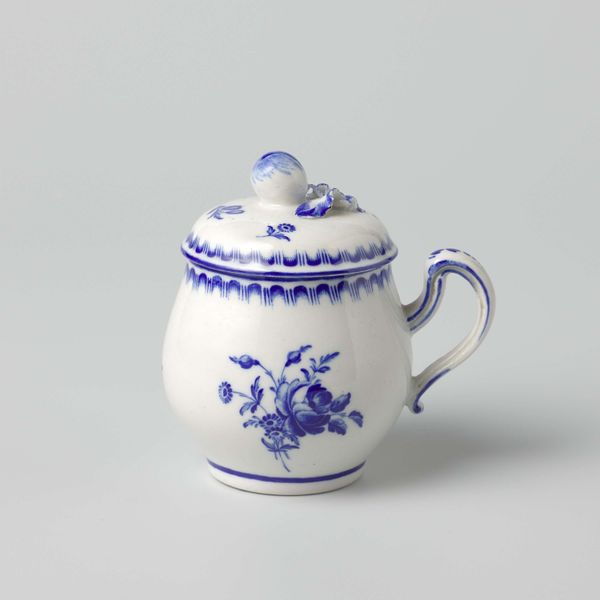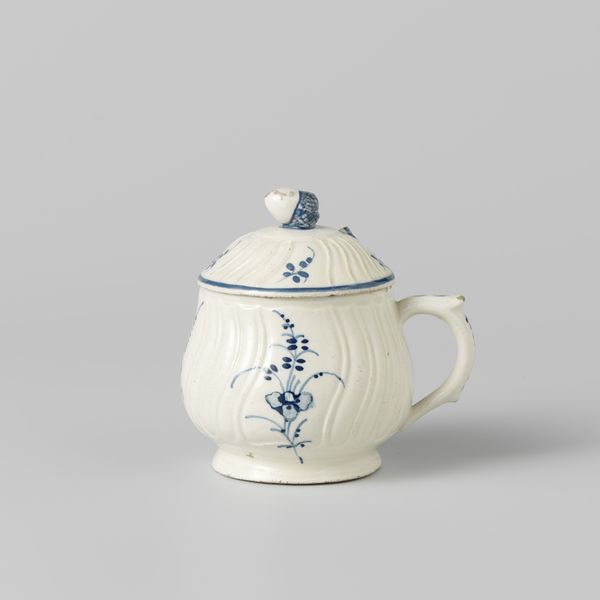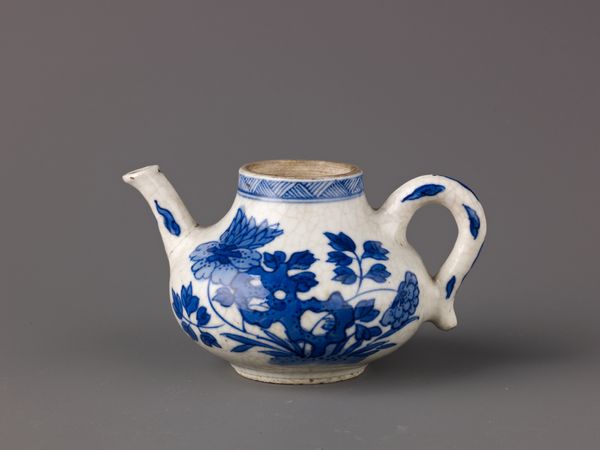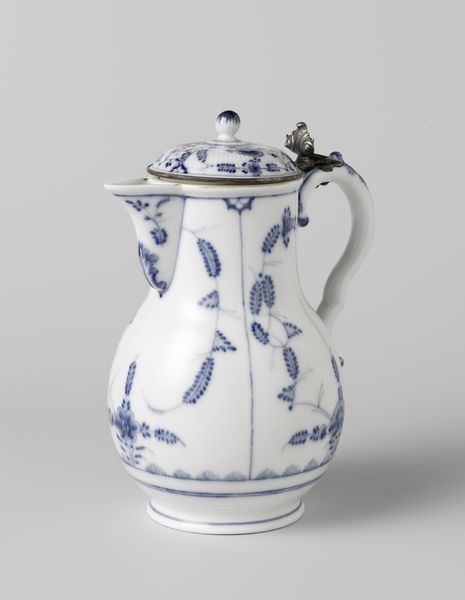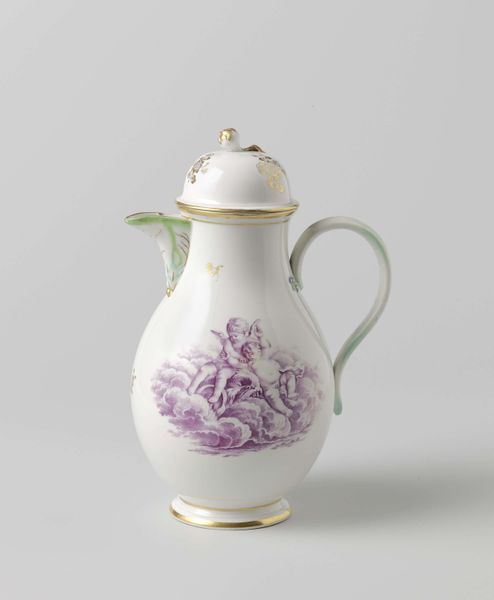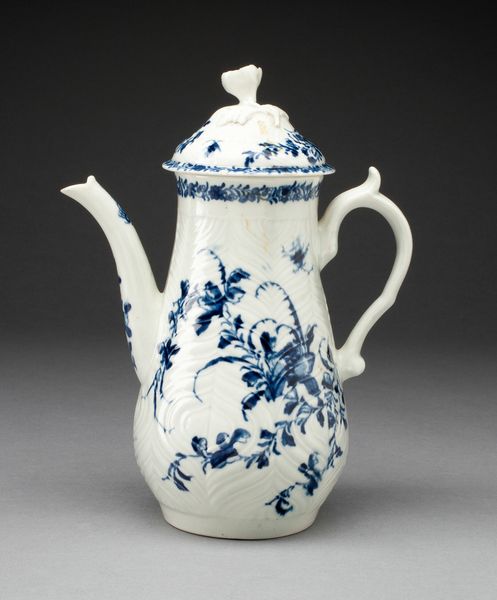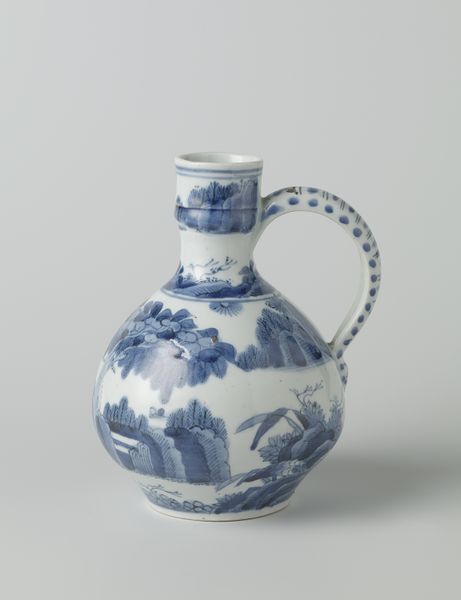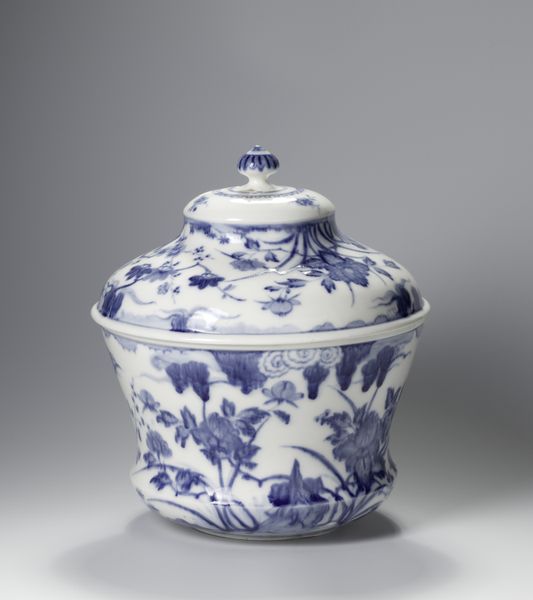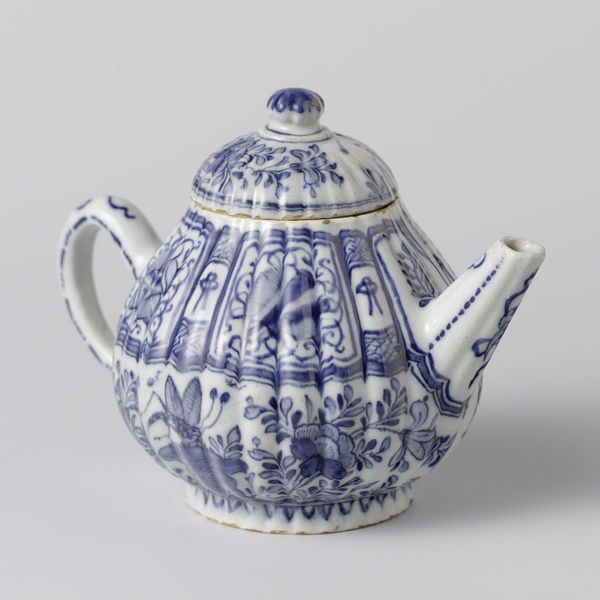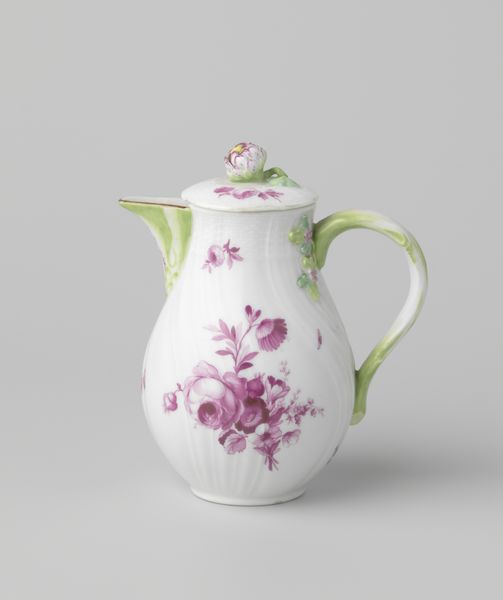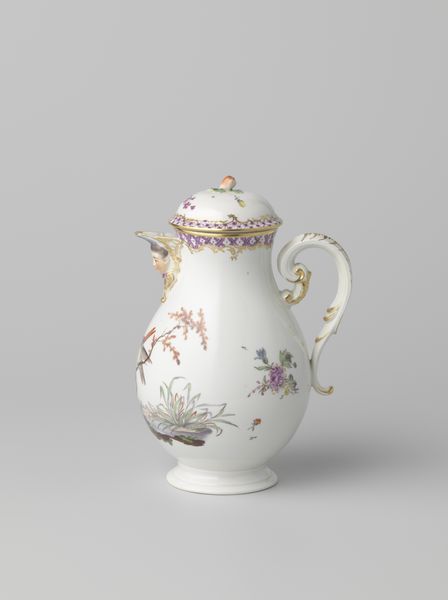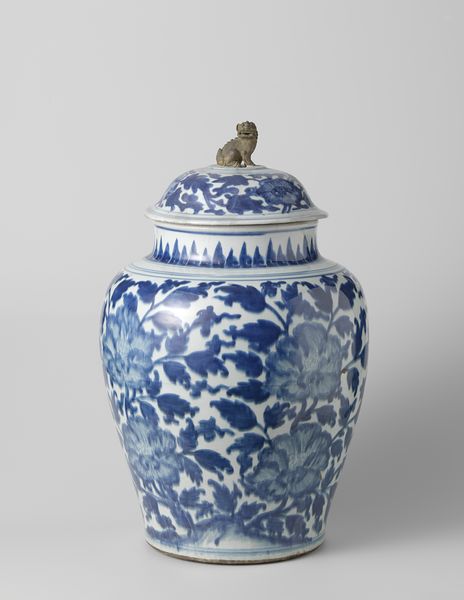
Dimensions: diameter 5.5 cm, height 3.6 cm
Copyright: Rijks Museum: Open Domain
Editor: This lovely little piece is a milk jug lid, painted with flowers! It's earthenware made around 1778 in Loosdrecht, and it’s currently held at the Rijksmuseum. I think the blue on white is just beautiful. It feels so clean and delicate. What can you tell me about it? Curator: The simplicity is quite deceiving. The Loosdrecht porcelain factory emerged in a complex political landscape in the late 18th century. Court culture was very important, and luxurious goods displayed one's sophistication. Do you notice how the Rococo style, with its asymmetrical floral designs, is a little bit toned down compared to earlier examples? Editor: I see what you mean. It’s detailed, but not as elaborate as I might expect. Why the change? Curator: Tastes were changing. This was the era of the Enlightenment, of democratic revolutions. Aristocratic excess wasn't exactly the best look for wealthy people anymore. So, objects like this milk jug lid represented a scaled-back elegance, aligning with new socio-political sensitivities. Editor: So, it's almost like a symbol of adapting to new social norms, even in something as simple as a milk jug? Curator: Exactly. Even everyday objects played a part in reflecting broader cultural shifts. The patronage of these kinds of porcelain works had shifted to a rising, wealthy middle class who appreciated status and elegance, but didn't want to come across as opulent as the nobility had done. Editor: That's fascinating. I hadn't considered how much social history could be packed into one little object. I learned a lot today! Curator: Me too! I like seeing new ways to look at things. It reminds us how dynamic our understanding of the past can be.
Comments
No comments
Be the first to comment and join the conversation on the ultimate creative platform.
